Installing an ERV in an Unvented Attic
I’m finally done with the insulation project and trying to move on ERV project. I have bought Panasonic FV-10VE1, have some questions regarding ERV and unvented attic. The insulation on top is about R26 (some 4 inch of Polyiso) and 2 inch polyiso with R13 denim glued under it.
I know that I need at least R30 on my climate zone 3B, my plan is to add another 2 inch on the outside when its time to do the roof. That will make it R39.
It does feel a lot like regular R30 home but the air is more stuffy because its tighter, hence the ERV project seems to be needed (Stand alone, not connected to HVAC). The temperature is about few degrees less or the same as outside temperature with stable RH. If its 91 degrees outside with 70%RH, its expected to be 90 or 91 degrees with 45-50RH inside the attic.
1) Noticed that the humidity is around 35 at the lowest and 52 at the highest and usually it drops down to around 40ish and stable. What would be a good humidity level on this type of attic? I can install a dehumidifier if needed.
2) I do not want to mix the attic air with the common space, when I installed the HVAC by putting registers up there for return and supply, but how about ERV duct? will this be a good idea?
3) Panasonic doesn’t specify the distance from the fresh air intake or stale air exhaust distance from the appliance, what is the standard? I have a choice to put it 36 feet away to make it comfortable to change the filter or closer about 10 feet away but less comfortable to do the filter change.
4) Some people suggest using a prefilter for intake air, will this be a good idea? this way I can probably change the filter in the appliance less often than 3 months. I was thinking of something like Fantech FB6.
5) Do I need to insulate the ducts? For ERV or even for HVAC?
6) For distributes the ERV fresh air, should I use a wye or a tee? I read that wye is to distribute and tee is better for intake.
7) Can ERV improve the house temperature without HVAC?
8) Planning to use rigid duct all the way, is it recomended to use screws or just tape and matic?
Thank you
GBA Detail Library
A collection of one thousand construction details organized by climate and house part


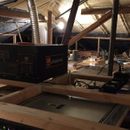
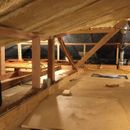
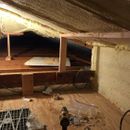
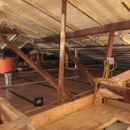
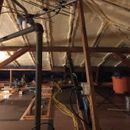







Replies
Another picture.
In my opinion there are 3 types of attics vented, conditioned and moldy.
It seems to me you are halfway to a conditioned attic you need to take the bitter pill and condition the attic.
If you do not want to mix the house air then the attic will need a separate system.
Walta
Walter, thanks for the insight. I would probably can condition the attic using ERV intake and supply (with damper, so it doesnt bring contaminants when its not blowing fresh air). Adding Merv13 filter on before the ERV intake and exhaust. If I did that, most definitely need the dehumidifier as well.
You can indrectly use the ERV for conditioning the attic. BSC folks recommend 50cfm/1000sqft of ceiling, so your ERV is good for 2000sqft.
What you can do is plumb the fresh air supplies to your living space and bedrooms. For the stale air pickup, install transfer grills in the ceiling in the kitchen and bathroom. Run the stale air pickup to the ERV from somewhere higher up in the attic.
This way the ERV draws conditioned air from the living space bellow into the attic without ever mixing with the rest of the house.
Akos, just saw your reply. I'm not quite sure I'm understanding what you meant.
"What you can do is plumb the fresh air supplies to your living space and bedrooms."
Ok, so its the standard way to plumb the fresh air, dont plumb it to the attic. Got it.
"For the stale air pickup, install transfer grills in the ceiling in the kitchen and bathroom. Run the stale air pickup to the ERV from somewhere higher up in the attic."
The transfer grill between the kitchen and bathroom probably not needed as I plan to install stale pickup registers on each bath and laundry...which happen to be near the kitchen and the door always open.
What I don't understand is if I install a stale air pickup in the attic high up in the attic (at the hottest point), does this mean technically we take the hot air out from the attic instead supplying it with a cooled fresh air? I think this is genius idea but I like to confirm this is what you meant. How many should I plumb from the attic?
Any air you take out from the attic would come from the house, thus indrectly supplying conditioned air. This is exactly what you want to get into your attic. A stale air pickup for your ERV in the attic can work great for this, thus my recommendation. You have to make sure that you have enough flow from this pickup (50cfm/1000sqft).
Since you don't have a lot of extra capacity on this ERV, my suggestion was to skip the stale air ducting (or at least some of it) to the house and just cut holes in the ceiling in the areas you want to pull stale air from and install a register there. This is essentially using your attic as a giant stale air return.
The attic stale air pickup should be near the ridge because usually the highest humidity is there, this is the air you want to move out of your attic. This hot humid air that is pulled out will now be supplied with conditioned air from the house thus indirectly conditioning your attic.
Good job with the install so far, looks much better than some of the professional ones I've seen.
I thought I update you and who knows it will help anyone else.
Finally finished with the ERV project, its a success! The stale air pickup total is 4 now (1 in the attic). I can say that the attic temperature is more closer to the inside, it used to be 10 -15 F degrees different and now I would say about 8 - 10 F degrees. Install dampers on every branches if you can. I strongly recommend to install duct silencer if you run all metal ducts like me.
Will eventually install HVAC with zoning, attic will be conditioned.
I'd continue to monitor attic humidity. Especially since it sounds like you aren't meeting the 50cfm/1000sqft of attic ventilation (air from the house interior into the attic).
Jon, I have dehumidifier installed and set to 50 RH, it sometimes turned on when I work up there but it is installed just to meet the code. The attic is unvented, I wasn’t aware there a ventilation requirement for such attic.
Ventillation is not required but conditioning is. The dehumidifier is sufficient although not the most energy efficient. The ERV stale air pickup does provide some of the conditioning, most likely not quite enough.
Since you'll be installing HVAC up there eventually plan on that providing the rest of the conditioned flow reqruied that Jon mentioned (50cfm/1000sqft total) and you can remove the dehumidifier.
Nice job with the install, nice to see somebody taking the time to do the job right. Looks great!
The way I see it you are flirting with disaster.
Let’s say you have a few warm damp week like I often see in the fall and the air in your house is 67° and the humidity is 65% one night it turns cold the outdoor temp drops to say 40°. My guess is the humidity in the attic will be higher than in the living space let’s say it is the same you would have a dew point of 54.8°. Sooner or later the outdoor temp will drop fast enough so the surface of the spray foam will fall below the dew point of the air in the attic when it does water will condense in the foams surface the denim will soak up the water. If the denim stays wet long enough it will become a moldy rotting mess.
It seems like the only way moisture has out of your attic is one or two hundred CMF the EVR pull out of the attic.
The temperature difference between the attic and the living space is an unimportant number what is important is how close the air in the attic is getting to its dew point under the worst conditions.
Walta
I should mention the attic is unvented attic, behind that denim insulation there are 2 inches of closed cell foam, insulation and the denim insulation is for sound dampening purpose while providing another R19. The one that dont have denim, it is 4 inches of foam. In the past few years, I never noticed the denim showing damp or there are indications water slipping into it. It is always dry like when I first installed it.
There are also a dehumidifier installed in the attic, just to meet the code. I monitored the RH throughout the year and it is stable around 35-45, sometimes it reach 55 but usually if I’m working up there and the dehumidifier kicks in dumping the water outside (set to 50RH). I live in southern CA where its normally dry.